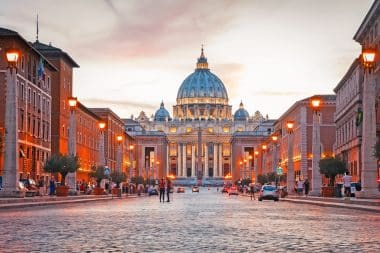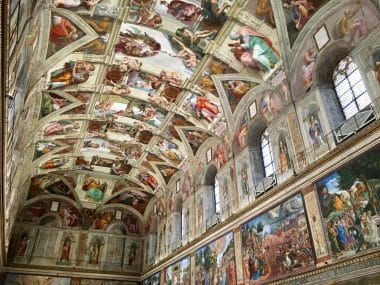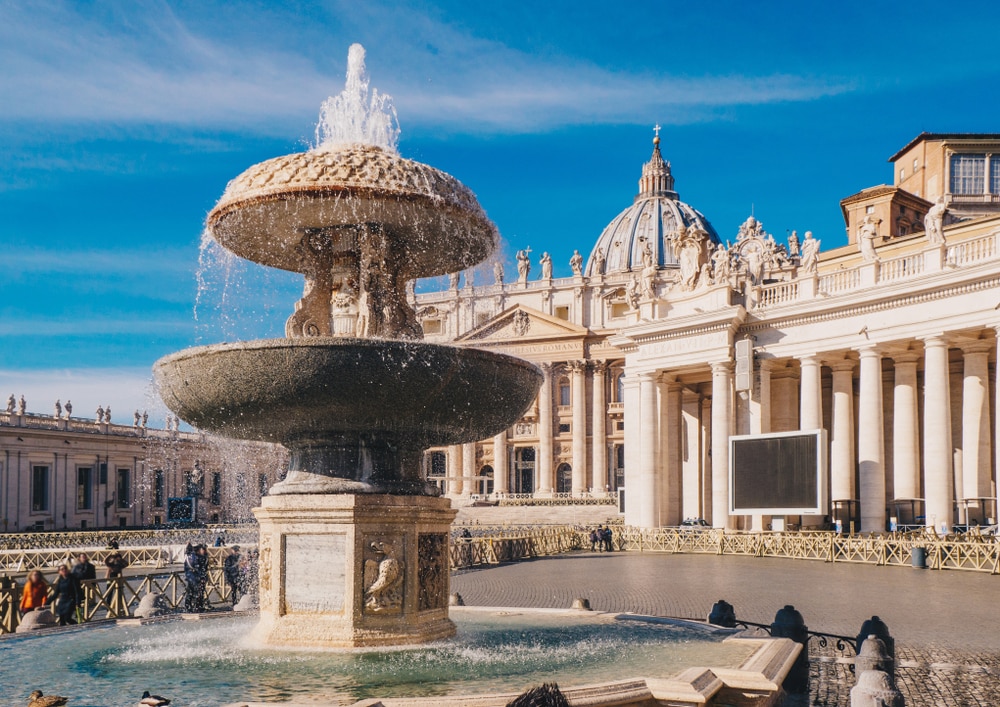Vatican City is unique in many ways. Not only that the dwarf state, whose name would actually indicate more to be a city than a state, is the smallest state in the whole world with an area of only 0.44 square kilometers. It is also the only country that has made Latin its official language. In addition, no country in the world has fewer inhabitants than Vatican City. At the last official census in 2020, there were 932, but only 552 of them were considered citizens.
In addition, the national territory is not surrounded by a country, but only by a city, namely the Italian capital Rome. The Pope is the head of state of the dwarf state, which was built on the Vatican Hill, a 75-meter-high tuff hill. Vatican City is the only country in the world whose entire territory has been designated a UNESCO World Heritage Site. These include St. Peter’s Basilica and the Vatican Museums, which are not located in Rome, as many people believe, but in a completely different country than Italy.
St. Peter’s Basilica

The name St. Peter’s Basilica is only known in the German-speaking world. The Italian name San Pietro in Vaticano gives an indication of the location of the basilica. Anyone who visits St. Peter’s Basilica enters the territory of the Vatican. In addition to this outstanding fact, St. Peter’s Basilica impresses with its size. The floor area of the basilica is exactly 20,139 square meters. 20,000 people can be in the building at the same time.
Of course, not for sightseeing, but for the trade fair. If you want to take in the beauties of St. Peter’s Basilica, built between 1506 and 1626, then a visit during the viewing hours, when the streams of visitors are well channeled, is a good idea. Before you enter, you have to take a look at the dress code, because of course it is chaste in this Catholic church. In any case, the shoulders must be covered and it is best to wear long trousers or a skirt that reaches at least above the knees. Otherwise, the visit can also be denied by the staff. St. Peter’s Basilica is spanned by a striking main dome and ten small side domes, all of which can be viewed from the inside. In addition to the 778 columns, 395 statues and 44 altars are grouped under these domes. Under St. Peter’s Basilica lies the tomb of St. Peter.
In addition, there are 20 tombs and monuments of popes positioned within St. Peter’s Basilica. Taking a closer look at the interior, tourists quickly notice that a single visit to St. Peter’s Basilica will not be enough if you want to deal with all the art treasures. The domes, for example, and also the altarpieces are designed with mosaics. Anyone who has seen all the mosaics of St. Peter’s Basilica has seen a 10,000 square meter mosaic together.
The Vatican Museums with Sistine Chapel
Among other things, the Vatican Museums house most of St. Peter’s Basilica’s altarpieces. The so-called Papal Art Collection also contains a whole range of other important art treasures. Oriental antiquities from ancient Egypt and Assyria, Greco-Roman art from classical antiquity, Etruscan antiquities, early Christian and medieval art from the third to the 14th century, as well as works of art from the Renaissance to the present day. The exhibition is complemented by a well-stocked ethnological collection.

In addition, the Sistine Chapel, which is housed in the official residence of the Pope, the Apostolic Palace, is also part of the Vatican Museums. The Sistine Chapel is known for its outstanding murals depicting scenes from the life of Jesus. These include, among other things, a depiction of the Last Supper. Parts of the ceiling paintings of the Sistine Chapel show scenes from the Old Testament, which were often depicted in art and textbooks, or used, for example, for advertisements. For example, The Creation of Adam and The Fall of Man and the Expulsion from Paradise. Another part of the Vatican Museums area are the Vatican Courtyards. The courtyard of the Belvedere invites you to stroll between pines, pines, palms and cypresses. Together with the Cortile della Biblioteca, it frames the Vatican Library, which was established as early as 1475. Among other things, there are 150,000 extremely valuable manuscript volumes here.
Vatican City seen from above
Even if you may have to queue for a while, you should not miss the walk to the main dome of St. Peter’s Basilica. From there, visitors have a fantastic view over the entire Vatican and St. Peter’s Square in front of St. Peter’s Basilica. The view over the Italian capital Rome, which surrounds Vatican City, also extends far. If you are athletic, climb the 551 steps to the false roof on foot. All others can get here by elevator. However, it is really only possible to go all the way up on foot and there are still 320 steps of the ascent to the final viewing platform.
What else you should know about Vatican City
More important than anywhere else in the area is to behave appropriately in Vatican City on the one hand, but on the other hand to be aware that the crowds of people pouring into this holy place also attract a lot of dubious people. Pickpockets often try their luck in the confusing hustle and bustle, which is why you should take special care of your valuables here. By the way, if you need cash, you can also use an ATM in Vatican City, which guides you with Latin operating instructions.


